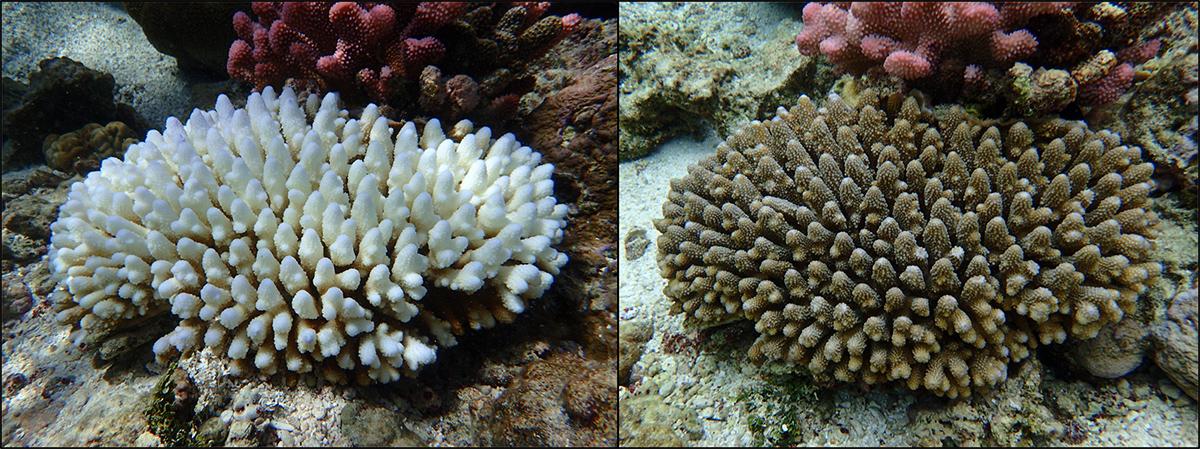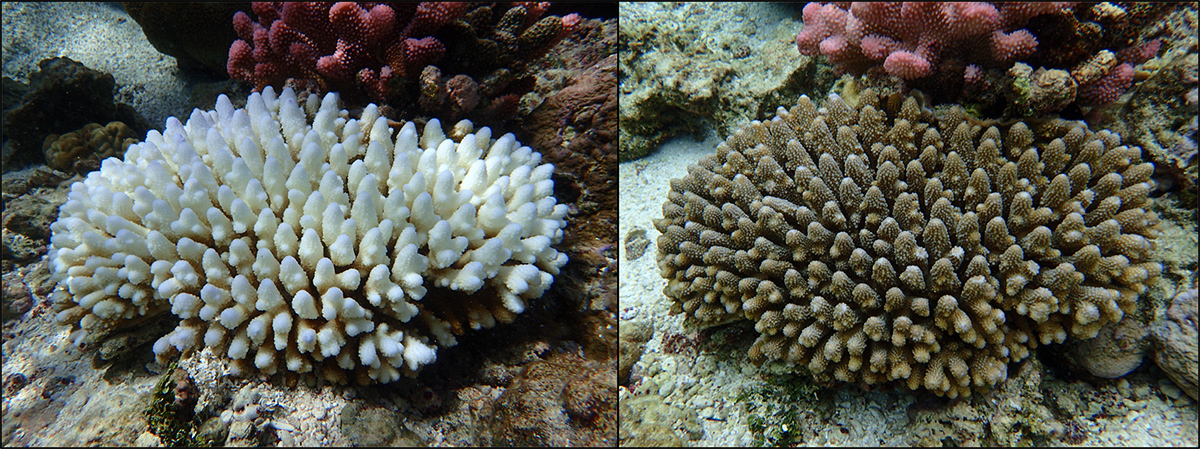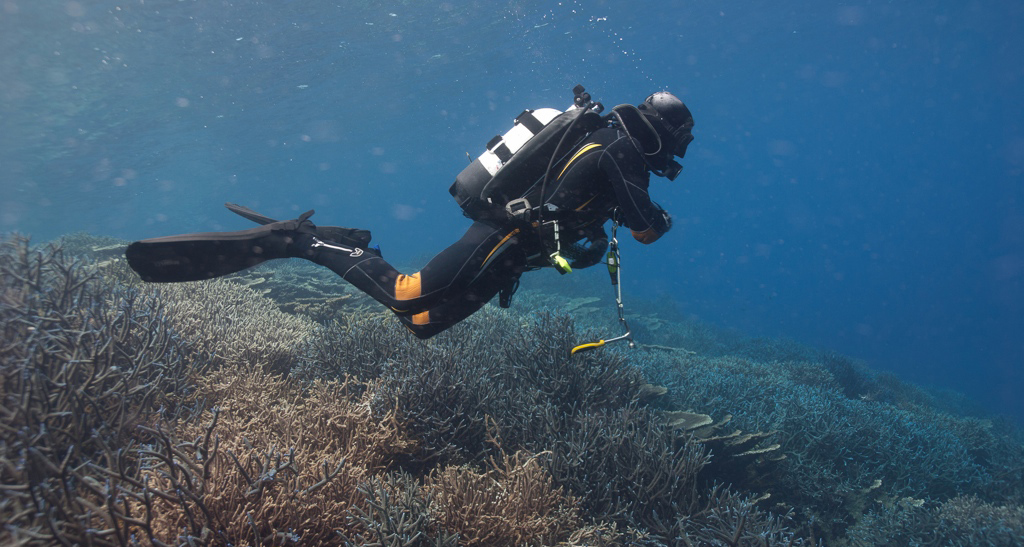One species of Samoan coral bounced back from repeated bleaching that wiped out its neighbours
A key species of reef-building coral in American Samoa survived repeated bleaching events in the hot summers of 2015 and 2017 while other species perished, according to new research from scientists at the Australian Institute of Marine Science (AIMS) and Stanford University.
AIMS - UWA Oceans Institute researcher Dr Luke Thomas, the lead author of the study, said his findings also applied to Australian reefs as these coral species are also found in Australian waters.
“This research paints a more optimistic view of coral’s capacity to cope with rapid climate change,” Dr Thomas said.
Corals bleach when the water they live in becomes too warm, and they expel the colourful symbiotic algae that provide them with energy via photosynthesis. The most severe and widespread bleaching on record occurred from 2015 to 2017, affecting more than a third of the world’s corals.
Scientists have been studying the corals near the island of Ofu for the past decade because they tolerate large temperature variations over the course of a day that would cause bleaching for most other corals elsewhere. The summer of 2015 was the first time they were seen to bleach.
The researchers watched the effects of this bleaching and a second one two years later on two related species, Acropora gemmifera and Acropora hyacinthus. While both species bounced back from the first bleaching, A. gemmifera also recovered from the second while 90% of A. hyacinthus colonies were wiped out.
The difference in resilience between closely related species was unexpected.
“Branching corals in the genus Acropora are the backbone of reefs across the Pacific and Indian Oceans. There are more than a hundred Acropora species and until now we thought they were all quite sensitive to heat.
But we’ve found there can be wide variation in resilience to recurrent bleaching between different species, which paints a more optimistic view of their capacity to cope with rapid climate change,” Dr Thomas said.
Comparing the responses of the two species revealed two differences were key to survival: the rate at which their gene activity returned to normal after the first bleaching, and the heat resistance of the symbiotic algae the coral associates with.
These findings, along with the ongoing research at AIMS into mechanisms of coral resilience to climate change, are allowing researchers to determine what species and populations are naturally more resilient and should be targeted for restoration and conservation approaches.
“We want to work out what corals might survive climate change, and encourage them,” Dr Thomas said. The research is published in the journal Molecular Ecology: https://onlinelibrary.wiley.com/doi/10.1111/mec.15143
Media Contact
Corporate Communications and Public Affairs - Media Officer
Emma Chadwick: 0412 181 919 or e.chadwick@aims.gov.au




